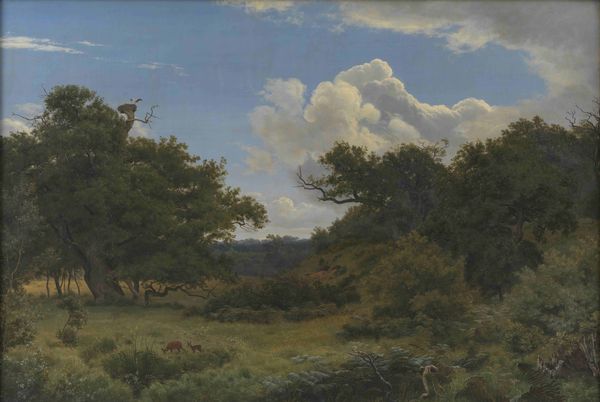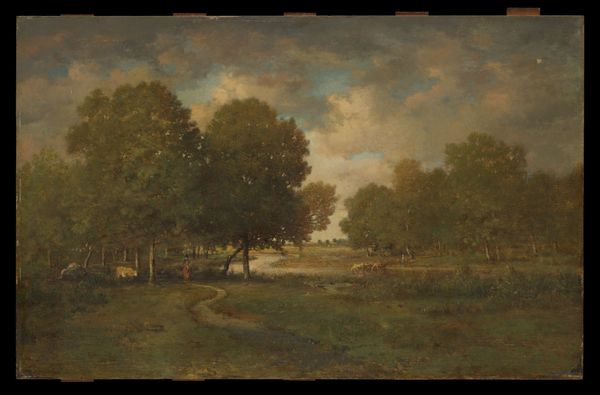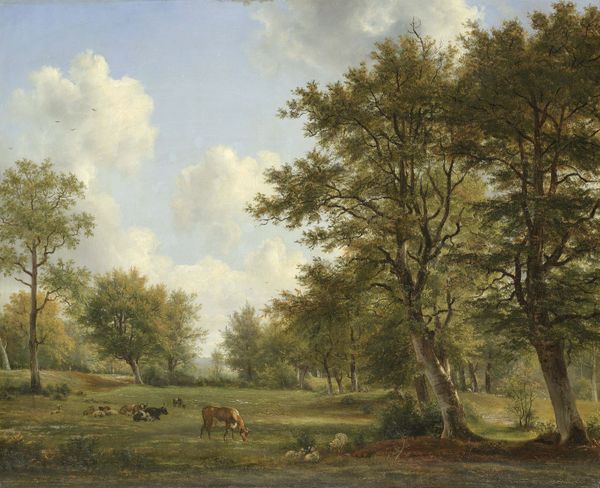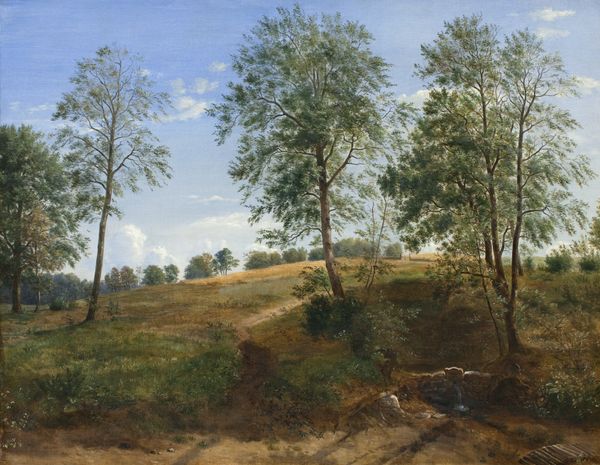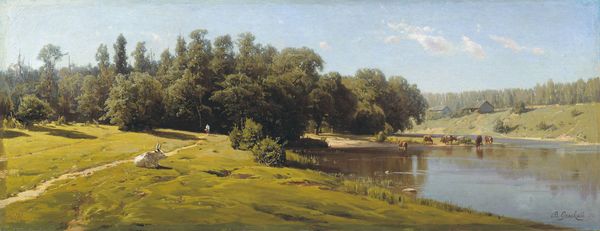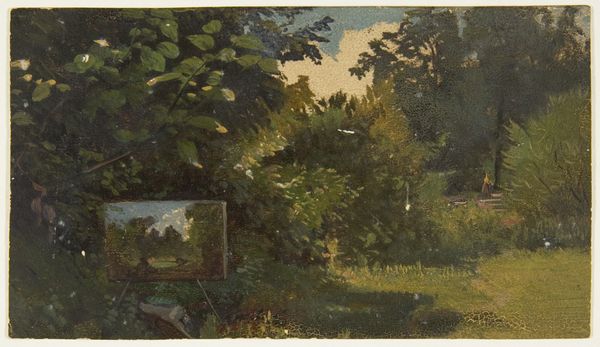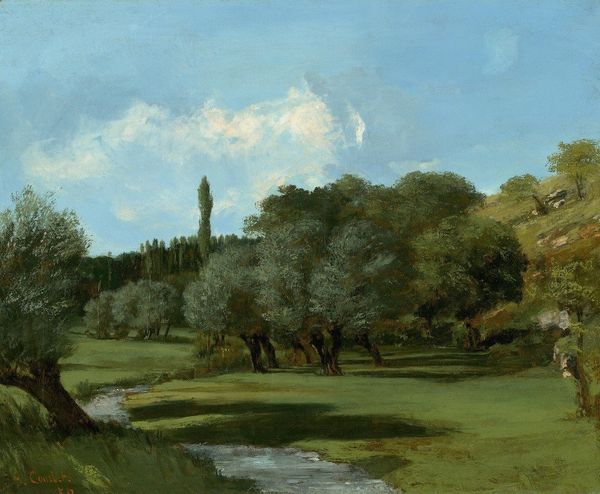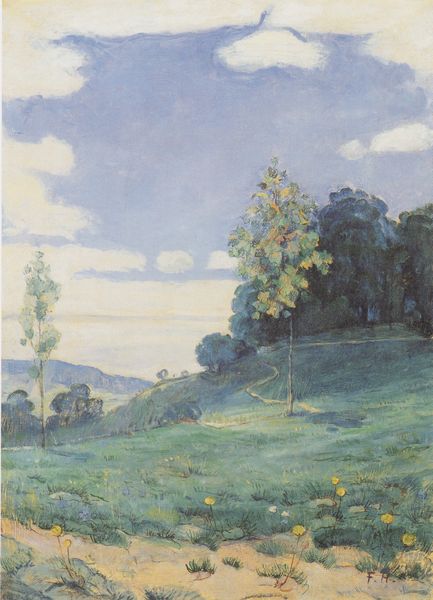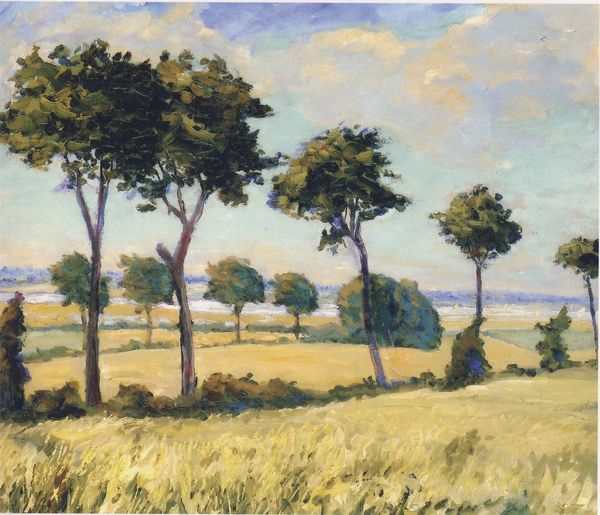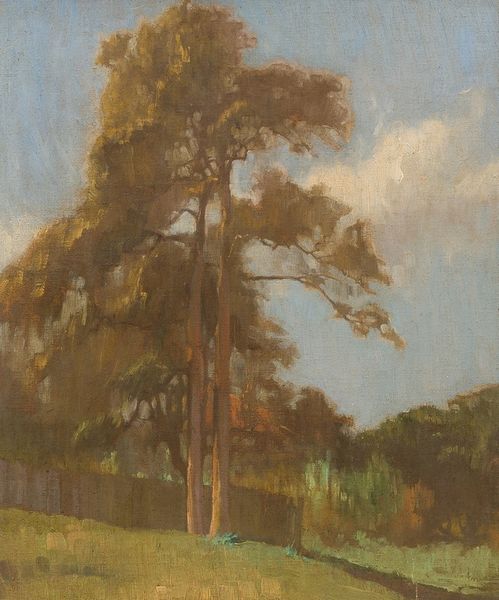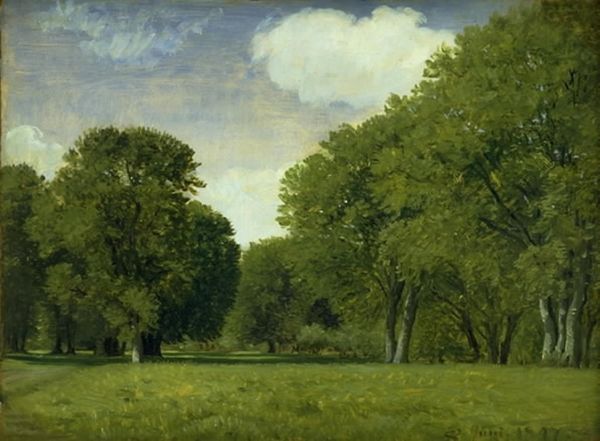
plein-air, oil-paint
#
plein-air
#
oil-paint
#
landscape
#
figuration
#
oil painting
#
romanticism
#
hudson-river-school
#
realism
Dimensions: 10 1/8 x 14 1/4 in. (25.7 x 36.2 cm)
Copyright: Public Domain
Curator: Before us hangs "Edge of a Wood," an oil-on-canvas work crafted by Théodore Caruelle d'Aligny sometime between 1845 and 1855, a time when landscape painting was truly blossoming. Editor: The expanse of green is simply arresting; it evokes a tranquil openness but is still contained within a careful and composed scene. What I initially glean is a beautiful tension between nature and order. Curator: The work exemplifies plein-air painting, aligning d’Aligny with a movement of artists seeking direct engagement with the natural world. It is fascinating to consider the location and what cultural constructs underpinned his process of being there. Editor: Structurally, the gradation from darker tones in the left corner to the lighter, airier sky at the top creates a pathway for the eye. The horizon line, though secondary to the bulk of trees, stabilizes the composition. Do you believe he captured the "truth" of nature, or a representation molded by aesthetic ideals of the era? Curator: Well, d’Aligny’s artistic choices are surely indicative of the rise of landscape painting as a tool for constructing national identity. We must reflect upon Romanticism, Realism, and the rising taste for nature that influenced not just art but ideas of national identity. It’s as though he isn't merely painting trees but is shaping an experience. Editor: Your analysis illuminates the cultural context so clearly! When focusing on color, it becomes apparent how subtly d’Aligny modulated the tones to imply depth, thereby using form to enhance the impression of expansive space on a 2-dimensional surface. It's almost a theatrical backdrop of sorts. Curator: Indeed, thinking about his travels and influences from Italy to France, we gain an insight on the different sociopolitical contexts shaping art production, allowing a better reading of landscape beyond formal considerations. Editor: Viewing "Edge of a Wood" has given me an even richer appreciation, from technique and visual vocabulary to context. Thank you. Curator: My pleasure. To appreciate not just the aesthetic form but its embedded layers of social relevance allows art a broader discourse with viewers.
Comments
No comments
Be the first to comment and join the conversation on the ultimate creative platform.
